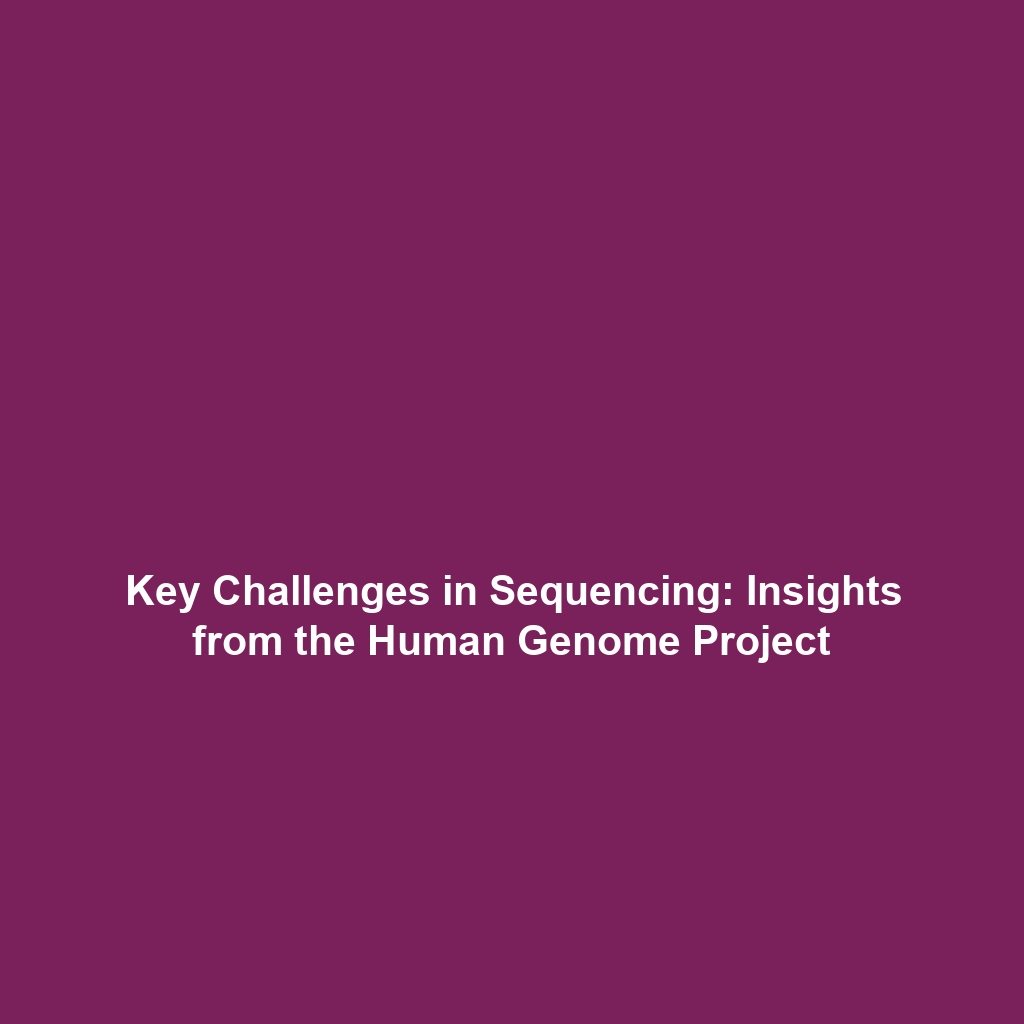<>
Challenges in Sequencing within the Human Genome Project
Introduction: Sequencing the human genome is a monumental undertaking that has reshaped our understanding of genetics. Among the various hurdles faced during this ambitious initiative, the challenges in sequencing stand out as pivotal. These challenges encompass technical limitations, interpretative complexities, and ethical considerations that can impede progress. The significance of addressing these challenges is not only fundamental to the success of the Human Genome Project (HGP) but also crucial for advancing personalized medicine and genomic research.
Key Concepts
The challenges in sequencing involve several major concepts that are critical to the Human Genome Project:
Technological Limitations
Initial sequencing efforts relied on Sanger sequencing, which, while groundbreaking, was slow and costly. As the Human Genome Project evolved, methods such as next-generation sequencing (NGS) emerged, drastically improving throughput and cost-effectiveness. However, technological limitations still exist, including:
- Quality control of sequencing data
- Sequence assembly challenges
- Difficulties in sequencing repetitive regions of DNA
Data Interpretation
With vast amounts of genomic data generated, accurately interpreting this information is paramount. Challenges include:
- Identifying functional variants versus benign polymorphisms
- Integrating genomic data with clinical information
- Addressing the complexities of gene-environment interactions
Applications and Real-World Uses
The challenges in sequencing have practical implications across various fields related to the Human Genome Project. Examples include:
- Personalized medicine: Tailoring treatments based on an individual’s genomic profile.
- Genomic epidemiology: Tracking disease outbreaks through genomic sequencing.
- Translational research: Bridging laboratory discoveries to clinical applications.
Understanding how these challenges are addressed can lead to improved methodologies in genomic research and healthcare applications.
Current Challenges
Despite advancements in sequencing technologies, several persistent challenges remain:
- High costs of sequencing and data analysis
- Data privacy and ethical considerations
- Lack of standardized protocols for data sharing and interpretation
These challenges highlight the ongoing need for innovation and collaboration within the genomic research community.
Future Research and Innovations
Research is ongoing to deal with the challenges in sequencing that are integral to the Human Genome Project. Future innovations include:
- The development of more accessible and affordable sequencing technologies
- AI-driven genomic data analysis for improved accuracy
- Techniques for real-time sequencing in clinical settings
These advancements could significantly enhance our understanding of human genetics and disease mechanisms.
Conclusion
In summary, while the challenges in sequencing represent significant obstacles to the Human Genome Project, they are also areas ripe for innovation and discovery. Addressing these challenges is essential for progressing in genomic research and translating findings into practical applications. For further exploration of related topics, visit our sections on Genetic Research and Personalized Medicine.

